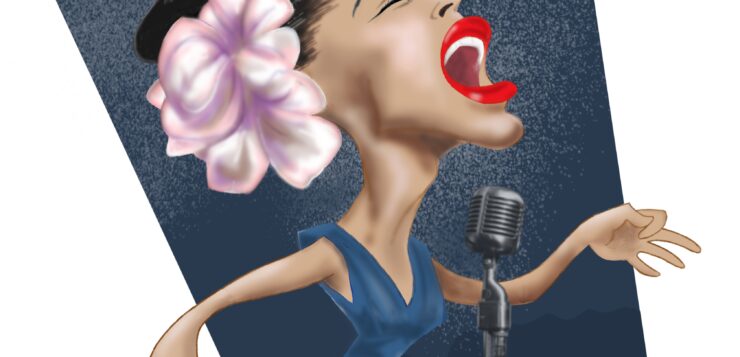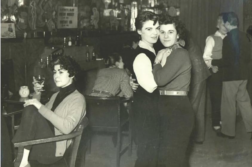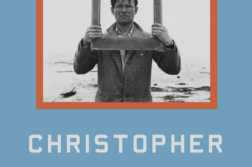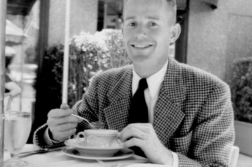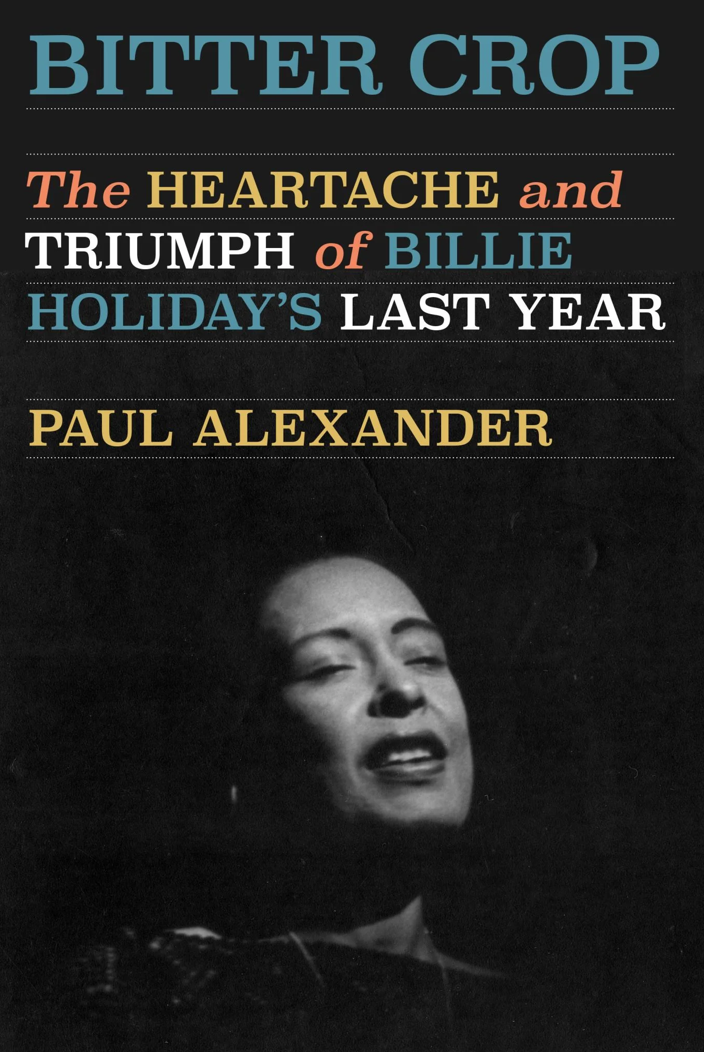 BITTER CROP
BITTER CROP
The Heartache and Triumph of Billie Holiday’s Last Year
by Paul Alexander
Knopf. 368 pages, $32.
ONE of the difficulties in writing about jazz legend Billie Holiday is having to separate truth from legend, rumor, and the often wish-fulfilling stories that she told about herself. Her autobiography Lady Sings the Blues, written with friend and reporter William Dufty, is called accurate “in the mythopoetic sense” by author David Ritz in his introduction to the fiftieth anniversary edition of the book. Bitter Crop, a new biography by Paul Alexander, wrestles with this problem but concludes that there’s ample evidence to support the view that Holiday was fully bisexual, having had a number of affairs with other women.
The author of eight books, Alexander has written biographies of literary figures such as Sylvia Plath and J. D. Salinger and non-artists like political operative Karl Rove. For this biography of Holiday, he brings in new material unearthed from private collections and institutional archives, interviews with people who knew her, and material gathered in the 1970s by arts journalist Linda LipnackKuehl for her unfinished biography. Using these elements, Alexander attempts to restore dignity to a misunderstood and often maligned figure whose life has frequently been seen only as tragic and filled with violence and addiction.
Many of the basic facts about Billie Holiday tend to reinforce this image of despair, with one lurid horror story after another. Born Eleanora Fagan to a pair of unwed teens in 1915, in Philadelphia, she was raised by an aunt in Baltimore. Eleanora was mentored by madams and ran errands for the women in the neighborhood brothels. Raped by a neighbor at age eleven, she was by age fourteen living with her mother in Harlem. By the time she was nineteen, she was singing in New York bars and clubs under the name Billie Holiday.
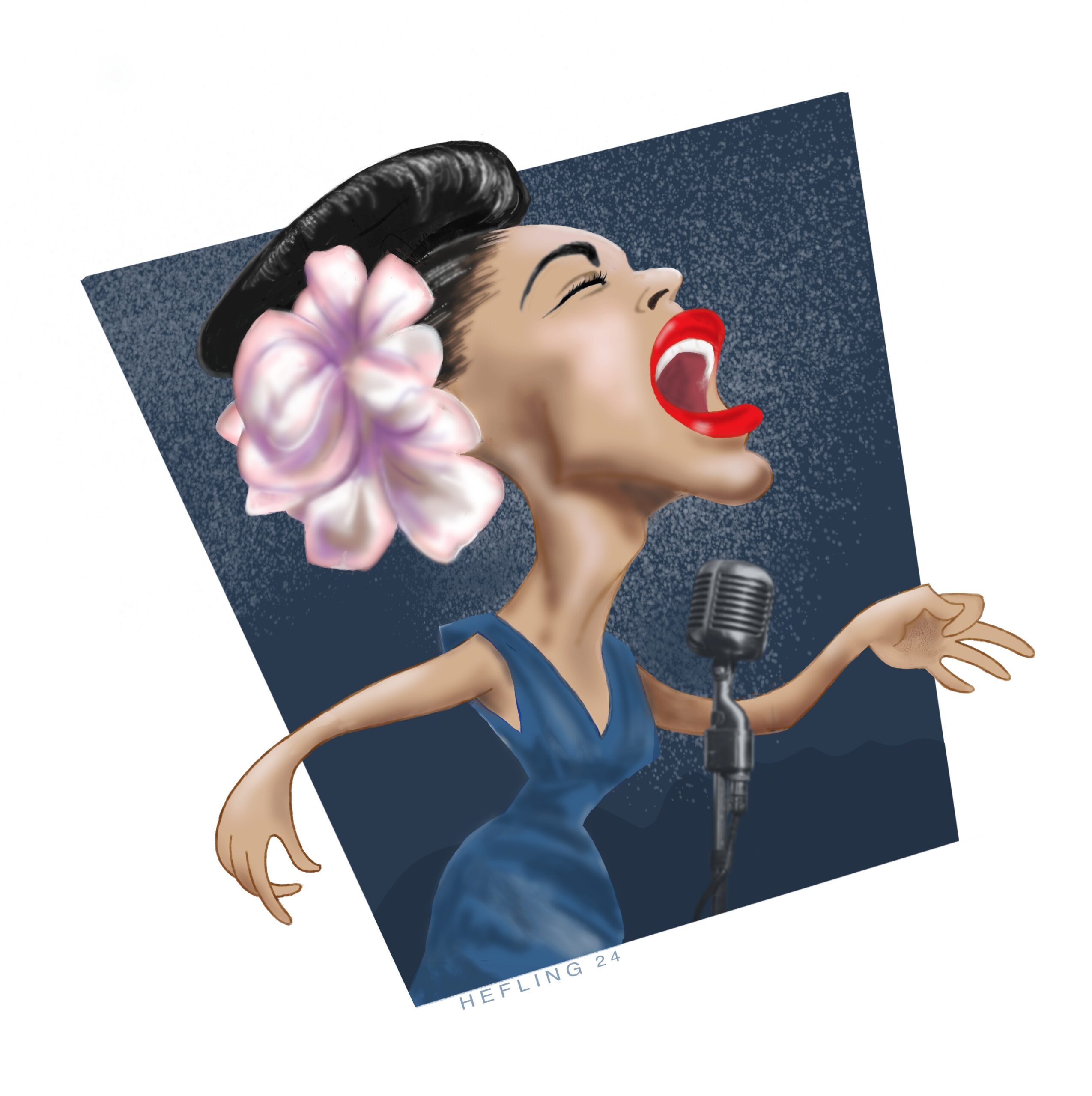 She married twice, had affairs with men, most of whom abused her physically and financially, and also had affairs with other women. Already an alcoholic, she got hooked on drugs and was pursued throughout her life by law enforcement agencies, including the New York City Police Department, the Federal Bureau of Narcotics, and the U.S. Customs Service. Set up and arrested for possession while in a hospital bed during her final illness, she died in New York City in 1959. Throughout her tumultuous life, however, Holiday seldom made excuses or apologized for the way that she lived. Her unique vocal artistry made her one of the most influential singers of the 20th century.
She married twice, had affairs with men, most of whom abused her physically and financially, and also had affairs with other women. Already an alcoholic, she got hooked on drugs and was pursued throughout her life by law enforcement agencies, including the New York City Police Department, the Federal Bureau of Narcotics, and the U.S. Customs Service. Set up and arrested for possession while in a hospital bed during her final illness, she died in New York City in 1959. Throughout her tumultuous life, however, Holiday seldom made excuses or apologized for the way that she lived. Her unique vocal artistry made her one of the most influential singers of the 20th century.
Alexander’s book is the first full-length biography of Billie Holiday since Donald Clarke’s Wishing on the Moon (1994). Holiday herself wanted to title her autobiography “Bitter Crop,” the last two words of her signature song, the still shocking “Strange Fruit.” Focusing on the last year of her life as a unifying thread, Bitter Crop shifts backward and forward in time, moving briskly through the singer’s life. Thanks to Alexander’s thorough research and the changing times, he could use previously suppressed material to produce a more honest look at Holiday’s private life and her relationships.
Men were drawn to her but afraid of living in the shadow of the increasingly famous performer. Holiday’s heterosexual relationships were often filled with accusations, arguments, and physical fights. “Come to find out she was a masochist,” remarked one of her boyfriends, bassist John Simmons. “She was doing things to make me fight her.” Using this classic abuser’s excuse, Simmons admitted to knocking Holiday out one time, and introduced her to heroin during their relationship.
Holiday was much happier with women, and they did not abuse her. During her time with the Count Basie Orchestra, she was seen with other women so often that some of her fellow musicians referred to her as “Mister Holiday.” Basie, whose first name was “Bill,” gave her the nickname “William.” In addition to casual encounters, Holiday had two longer-term relationships with women. Sadly, both relationships were cut short by outside forces. She was one side of a love triangle with Louise Crane (of the Crane Paper Company family) and her partner, the poet Elizabeth Bishop. The affair was ended by one of Louise’s cousins, John Hammond, the influential music producer who had “discovered” Holiday, to protect the Crane family name.
The famous, outrageous, and politically well-connected Tallulah Bankhead was also infatuated with Holiday. Nicknaming her “Banksy,” the singer occasionally stayed in Bankhead’s apartment in New York City and at her country house: “At the Strand, when Tallulah visited Billie in her dressing room after the show, they often ended up on the sofa in a compromising position, and Tallulah enjoyed leaving the door to the hallway open enough for anyone passing by to spot them.” Twice Bankhead attempted to intervene in the federal government’s pursuit of Holiday by appealing directly to FBI Director J. Edgar Hoover. However, she also unceremoniously ended their relationship in fear of further exposure during an already scandalous court case involving Bankhead’s housekeeper. She makes no mention of Billie in her autobiography.
Throughout Bitter Crop, Alexander imagines what Billie Holiday’s private thoughts and emotions might have been. Example: “Fighting through the anxiety that often seized her before she went on stage, she glanced around her modest dressing room. She had been in better, to be sure, but she had also been in worse.” This may be an off-putting technique for some readers, and I think he definitely goes too far with these interior constructions late in the book when he has Holiday’s friend and frequent collaborator, jazz great Lester “Prez” Young, speak from beyond the grave.
This narrative decision notwithstanding, Alexander has written a brisk, absorbing book, adding atmosphere and detail to his account of Holiday’s day-to-day life and performances. He seldom fails to mention her sense of style, describing what she wore and how she looked on stage. At the first Monterey Jazz Festival in 1958, for example, she appeared wearing “a chic evening gown featuring a star pattern, oversized dangling earrings, and a snug-fitting mink stole. Her hair, though not slicked back, was pulled into her customary ponytail.” This close attention to detail does seem fitting, however, for such a legendary artist, who was able to turn popular songs into vivid and enduring scenes from her own life.
Reginald Harris, a poet and writer based in Brooklyn, is the author of Autogeography.


